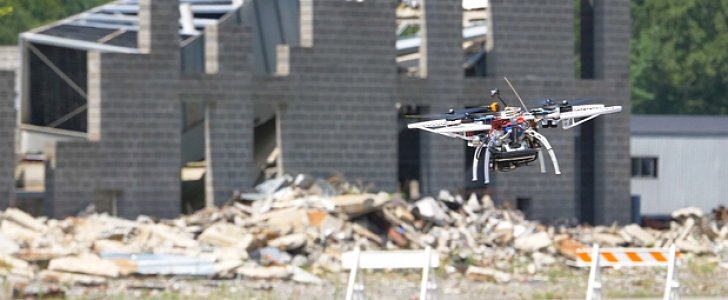Having drones flying over our heads with increasing regularity is something we will all have to get used to. The ease with which we accept them comes in part from the knowledge that someone, somewhere is controlling them and, if need be, can be held accountable for unfortunate incidents. But will be at ease with autonomous drones flying overhead?
Autonomous drones are a technology currently being researched by the U.S. Military's supplier of advanced technologies, DARPA. Called the Fast Lightweight Autonomy (FLA) program, DARPA plans to create a machine capable of flying itself to various areas and perform various tasks, including pre-mission reconnaissance in hostile urban areas or searching for survivors following major disasters.
The program is currently at Phase 2 development, meaning the testing of the algorithms powering the craft. FLI was tested last week over a mock town at the Guardian Centers training facility in Perry, Georgia.
As per DARPA's statement, the tests proved significant improvements in the technology. The drone was capable of “flying at increased speeds between multi-story buildings and through tight alleyways while identifying objects of interest.”
It also went through a narrow window into a building and descended down a hallway searching rooms and 3D-mapping the interior. The drone also showed improvements when it comes to flying down a stairway and exiting the building through a doorway.
The drone uses a neural net to identify roads, buildings, cars, and other objects. It then maps them and includes the info in downloadable and clickable images. This info is sent to the soldier's Android Tactical Assault Kit (ATAK) geospatial digital map, allowing troops to better understand their surroundings.
DARPA's main goal of the research is to create a machine capable of working with human soldiers on the battlefield. Using autonomous drones would save crucial time in sensitive and stealth missions, as they do not require a communications link that might be picked up by the enemy.
There is no official timetable set for the deployment of the drones. DARPA says algorithms developed in the FLA program will be sent to the Army Research Laboratory for further development.
The program is currently at Phase 2 development, meaning the testing of the algorithms powering the craft. FLI was tested last week over a mock town at the Guardian Centers training facility in Perry, Georgia.
As per DARPA's statement, the tests proved significant improvements in the technology. The drone was capable of “flying at increased speeds between multi-story buildings and through tight alleyways while identifying objects of interest.”
It also went through a narrow window into a building and descended down a hallway searching rooms and 3D-mapping the interior. The drone also showed improvements when it comes to flying down a stairway and exiting the building through a doorway.
The drone uses a neural net to identify roads, buildings, cars, and other objects. It then maps them and includes the info in downloadable and clickable images. This info is sent to the soldier's Android Tactical Assault Kit (ATAK) geospatial digital map, allowing troops to better understand their surroundings.
DARPA's main goal of the research is to create a machine capable of working with human soldiers on the battlefield. Using autonomous drones would save crucial time in sensitive and stealth missions, as they do not require a communications link that might be picked up by the enemy.
There is no official timetable set for the deployment of the drones. DARPA says algorithms developed in the FLA program will be sent to the Army Research Laboratory for further development.


